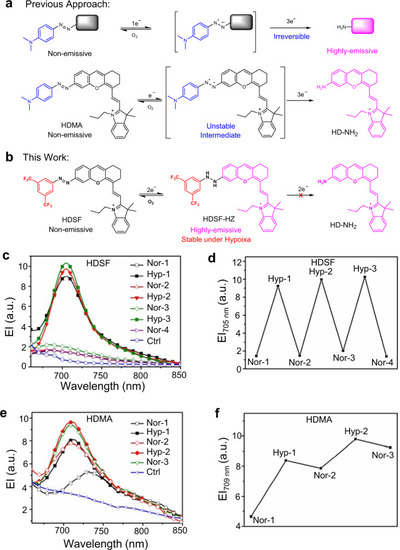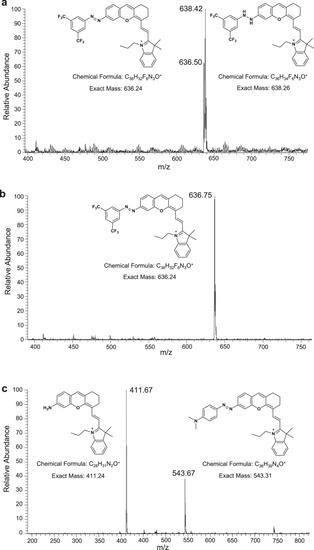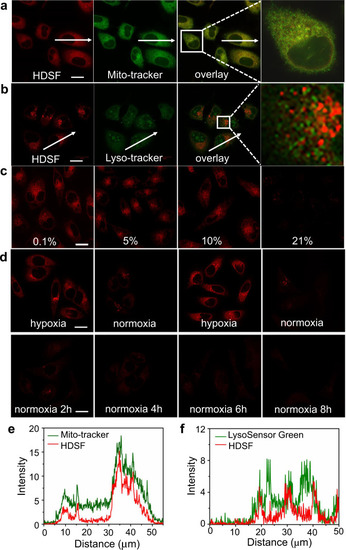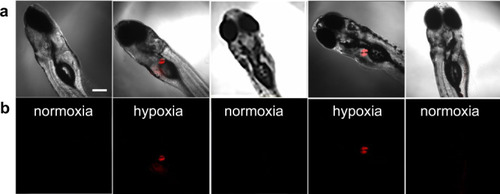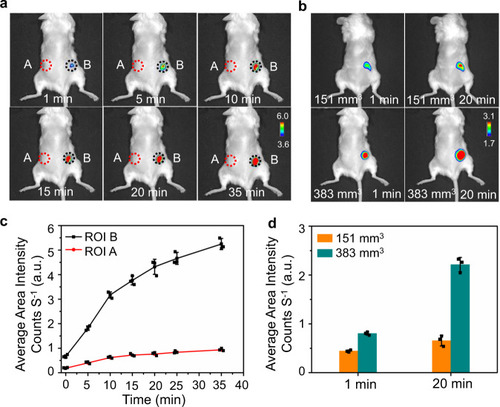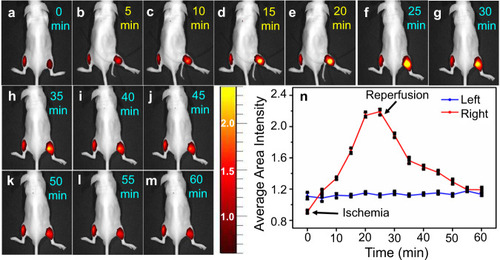- Title
-
Rational construction of a reversible arylazo-based NIR probe for cycling hypoxia imaging in vivo
- Authors
- Zhang, Y., Zhao, W., Chen, Y., Yuan, H., Fang, H., Yao, S., Zhang, C., Xu, H., Li, N., Liu, Z., Guo, Z., Zhao, Q., Liang, Y., He, W.
- Source
- Full text @ Nat. Commun.
|
|
|
ESI-MS spectra of probe solutions (20 μM in PBS buffer) incubated with RLM (250 μg mL−1) and NADPH (100 μM), |
|
Numbers in parentheses are in kcal/mol, which are free energies of HDSF reduction intermediates and products (blue color) or HDMA reduction intermediates and products (red color). |
|
Confocal fluorescence images of MCF-7 cells co-stained with 2 μM HDSF and Mito-Tracker Green ( |
|
Confocal imaging of a 6-day-old zebrafish embryos injected with 2 nL HDSF (2 μM). Images were collected for zebrafish embryos underwent water rinse (normoxia) and BDM (15 mM, 5 min) treatment (hypoxia) successively in cycle. |
|
Optical imaging of human breast MCF-7 tumor-xenografted mice injected with HDSF (20 μM, 50 μL). |
|
Optical imaging of cycling hypoxia in ischemia-reperfusion process in a living mouse via intramuscular injection of HDSF (20 μM, 50 μL, 20 min) in the two hind limbs. The ischemia-reperfusion process was simulated via treating the right limb with a tourniquet for 25 min followed by removing the tourniquet thereafter. |

